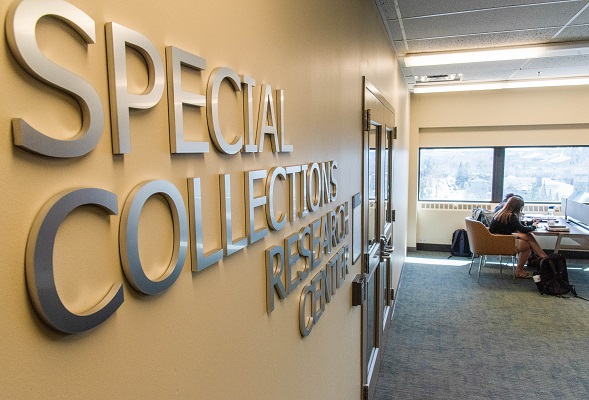Illustrators and Authors: (8.5 linear feet) contains the information that Mr. Walp gathered from and about individual illustrators and authors. Most of the items fit into consistent subseries. The few items that were unique for particular illustrator or author are labeled topically. Any illustrator or author without any original materials (articles or book materials only) was removed from this series. The articles are in the Articles and Clippings series, and the book materials are in "Miscellaneous" at the end of Illustrators and Authors, in alphabetical order by illustrator. There are also seven calendars at the end of the series, which use the art of many of the illustrators.
Articles : Mr. Walp collected clippings on the illustrators and authors. Most are biographical, which discuss the life and the technique of the illustrator or author. Some are lists of books (bibliographical), or book reviews.
Book Materials : this subseries is for materials peripherally related to a specific book. The majority are either bookmarks or dust jackets. It also includes advertisements, cards and stationary that Mr. Walp made with images from the book, and exhibit cards that Mr. Walp made for the item.
Calling Cards : Mr. Walp wrote to illustrators and authors, asking them to sign small cards that he sent, and to draw a sketch, for his two daughters. These calling cards are unique works by the artists.
Correspondence : The bulk of the correspondence subseries consists of letters from illustrators and authors to Mr. Walp, as well as some drafts of letters by Mr. Walp. They are arranged in chronological order, the undated material first, with interleaving between each mailing. The envelope is before the letter. Most of the correspondence is from 1950-1980. Some of the illustrators made sketches on the letters or envelopes, especially H.A. Rey and Ed Emberley. Emberley especially drew both on the letters and almost every envelope. Other types of correspondence are in separate folders. Christmas cards are from the illustrator or author. While many of them are simply signed, others have personal messages. Other correspondence is from the children, spouses, or heirs of the illustrator or author, or between the illustrator or author and a third party.
Most of the correspondence involves Lee Walp contacting the illustrator or author to explain the Walp collection and ask for materials or trying to purchase them. The replies then center around what they are willing to give or sell. If correspondence continues, the letters are more casual, between friends. Some of the correspondence responds to Mr. Walp's query about the danger of comics, which he used to write an article (see Articles, Exhibits, and Lectures by the Walps). Others explain their creative process.
Manuscripts and Illustrations : This subseries contains all materials from the development of a book by the illustrator or author. It includes notes, handwritten drafts and sketches, dummies, typed drafts, and printer's proofs. Many of the drafts and proofs have hand-written corrections, both from the illustrator or author, and from the editors. Proof sheets that were folded in the book order are in this subseries. Proof sheets that were simply folded to make them smaller were flattened and are housed in flat files. Published materials were cataloged separately. Items were classified as by the illustrator or author depending on if the drafts emphasized the illustrations or the text. There are several drafts of many books by Ed Emberley and Robert Andrew Parker, as well as Berta and Elmer Hader's Wish on the Moon and John Hartford's Steamboat in a Cornfield.
Photographs : The photographs are typically of the illustrator or author, at their home, during one of Mr. Walp's visits. Others are at book signings or public events. A few photographs are of artwork. Ed Emberley has a series of photographs documenting how he creates a woodblock print.
Walp's Notes : Mr. Walp often wrote down his impressions from visits with the illustrators or authors. He also used his collection, and personal contact with the illustrators and authors, for several bibliographical projects. The collection contains records of projects on Ludwig Bemelmans, Robert Lawson, and Antoine de Saint-Exupéry's The Little Prince. The papers for Bemelmans are the most complete, including correspondence to gather information, drafts, and the published article.
Most of the other materials are pieces that used the work of the specific children's book illustrators. These pieces include magazine articles, cards, and calendars. There are also copies of a few scholarly papers, copies of award acceptance speeches, and programs from art exhibits.
